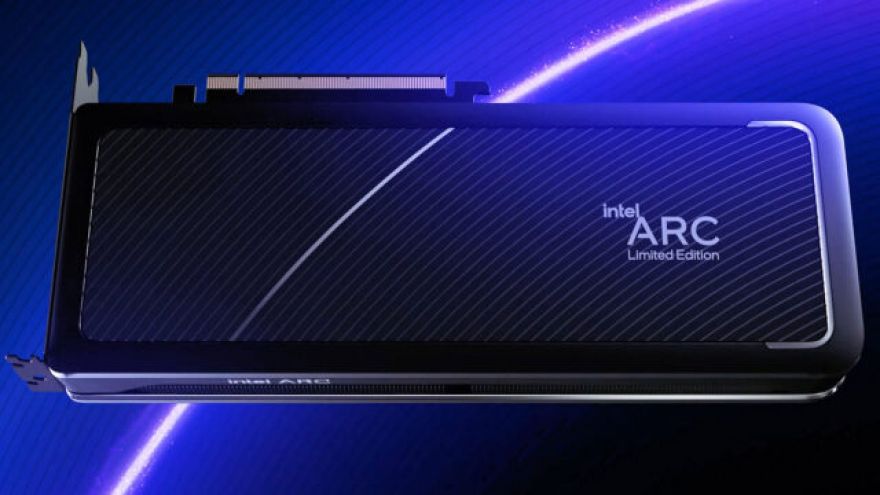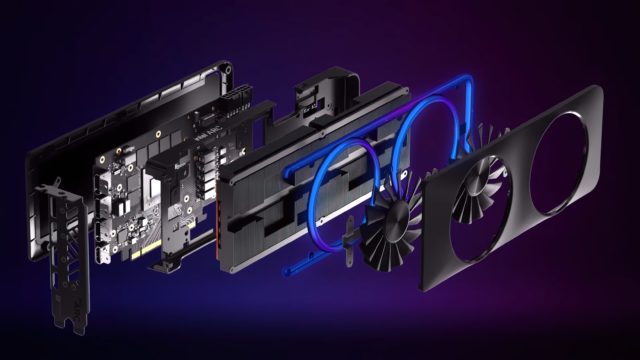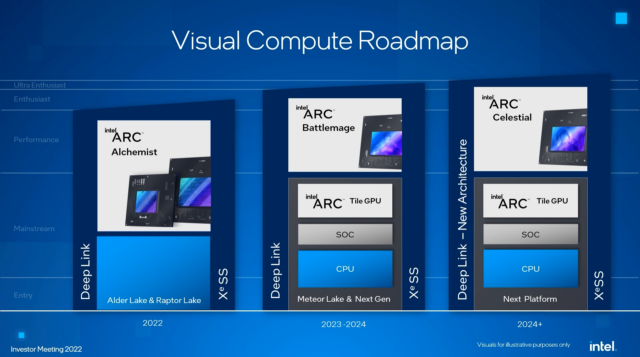
Intel Graphics Chief: GPUs With a Single Power Cable Are the ‘Sweet Spot’
It looks like Intel won’t be competing head-to-head with the RTX 4090 and Radeon RX 7900 XTX anytime soon. In an interview about the company’s plans for Arc GPUs in India, its graphics chief dished on how it sees the market as a whole. In the interview, Raja Koduri, who famously left AMD to head up Intel’s nascent Visual Computing Group, said he sees midrange GPUs as the company’s future.
Koduri gave the interview to the website in India when he was there for an inaugural conference sponsored by Intel. He spoke broadly about the company’s plans for launching Arc in India, as well as its future plans for Arc.
Intel Arc A750 and A770 spec sheet, click to expand. (Image: Intel)
According to Raja, those GPUs were in the “sweet spot” in terms of power consumption. However, they need to figure out how to deliver that level of performance with just a single power cable in the future. Koduri explicitly stated Intel will not be following in the footsteps of AMD and Nvidia by increasing the power required for each generation of GPUs. Instead, he’s taking Intel in the opposite direction. “Performance per Watt, or delivering higher performance at lower power, is my top priority. There will always be someone with some skill who can say ‘I’m going to give you more juice,’ but my focus is lower power,” he told the site.

Intel’s Arc A770 exploded-view. (Image: Intel)
When asked if that means Intel will be avoiding the high-end market, Koduri affirmed it. “What is the definition of high-end? Is it 600 Watts? Obviously our partners and our customers want some halo SKUs for bragging rights, and we always like to figure out ways to enable that,” he said. “But my priority at this point is getting that core audience, with one power connector. And that can get you up to 200-225W. If you nail that, and something a little above and a little below, all that falls into the sweet spot.”
On the one hand, it’s a bit disappointing to find out Intel has no plans to take on the halo products from its competitors. Those are the ones we get the most excited about, and the ones that drive headlines. It’s also an area that would benefit from some pricing competition, as things have gotten out of control lately. On the other hand, he’s certainly correct that the majority of the market is in the low-to-midrange, which is how it’s always been. Nvidia has stated many times its formerly ~$200 x60 GPUs always have the most market share. AMD also didn’t even bother tackling the high-end with its Polaris line many years ago. Plus, the right now is the Turing-based Nvidia GTX 1650. This $150 GPU doesn’t even need any power cables, as it draws its 75W from the PCIe slot.

As far as the future goes, the company is already working on its next architecture, code-named Battlemage. Koduri didn’t have much to say about its progress, though. When the current Alchemist cards were about to launch, Intel reps states its engineering team had already moved onto Battlemage. But Koduri stated he’s not ready to talk about it yet, other than to say Intel is sticking to its roadmap. He said there will be iterations and “flavors” or Arc Alchemist in the future before Battlemage emerges. That sounds like it’ll be a late 2023 product. It might be influenced by its next-gen CPU’s timeline too, which is Meteor Lake. That CPU will have Xe “tiles” on it, a first for Intel.
The whole is quite interesting, as Koduri delivers some straight talk instead of PR mumbo jumbo. We haven’t heard much from Intel since the Alchemist launch, so it’s refreshing to get an update of sorts. It’s disappointing we’ll probably never see a flagship 500W Intel GPU, but with the vast majority of the gaming world still running 1080p resolution, that seems to be a fool’s errand anyway. Either way, it seems the news of Intel was overblown. It does now seem like an Intel rep when he said, “we’re not going anywhere.”
Now Read: